Table of Content
Kona | Intro
In various regions of the Big Island of Hawaii, the western side, including Kona and the Kohala Coast, has a drier climate, hence it boasts the most beautiful beaches and snorkeling sanctuaries. The Kona mentioned here starts roughly at Kona town, which is where the Kona airport is located, and extends south along the western coastline. The area around Kona town has many shops and lodgings, including Costco and Target, making it the most convenient area on the Big Island. If you wish to travel north or south, or even east to Hilo, all are within day trip distance from Kona. People who love beaches and snorkeling often spend several days in Kona. Besides snorkeling and beaches, the Kona area is actually also the place with the most historical sites on the Big Island. Many of the ruins from the ancient Hawaiian kingdom are located here, so you can also allocate some time to learn about the real "Hawaiian history."
Here's a simple map for everyone showing our journey southward, so you can get an idea of the extent of the Kona region.
Find a stay in Kona:
Kona | Historic Attractions
Historic Kailua Village
In Kona, the old town of Kailua-Kona, which is what we refer to as Kona town, is the most bustling area. The Historic Kailua Village is located at the central point of the Kailua Bay coast, just a 15-minute drive south from Kona airport. Nearby, there are many beaches suitable for snorkeling, and a variety of sea-viewing and snorkeling tours depart from the nearby pier.
Kailua Pier
Near Kailua Pier, in the evening, the biggest restaurant Gertrude's orchestra plays live music, and the atmosphere is very high and cozy while strolling along the beach (when I came here, the style of the music played that day was very similar to Taiwanese songs for some reason, and I had a wrong impression that I was in Kenting instantly). If you are staying in the neighborhood, don't forget to visit the Old Town.
![Hawaii Island] Kona Scenic Spot Itinerary 1 Kona, big island kona 1](https://blog.travelhackfun.com/wp-content/uploads/2022/05/batch_2022-03-05-15-22-52-1.jpg)
![Hawaii Island] Kona Scenic Spot Itinerary 2 Kona, big island kona 2](https://blog.travelhackfun.com/wp-content/uploads/2022/05/batch_2022-03-05-15-25-47-1.jpg)
![Hawaii Island] Kona Scenic Spot Itinerary 3 Kona, big island kona 3](https://blog.travelhackfun.com/wp-content/uploads/2022/05/batch_2022-03-05-15-27-20-1.jpg)
![Hawaii Island] Kona Scenic Spot Itinerary 4 Kona, big island kona 4](https://blog.travelhackfun.com/wp-content/uploads/2022/05/batch_2022-03-03-20-19-49.jpg)
Ahu'ena Heiau
Old Town was a fishing village in the olden days and was also the home of King Kamehameha I of the Kingdom of Hawaii, whose name we see everywhere on the Big Island, and who reigned as King of the Kingdom of Hawaii in 1810. Along the main road, Alii Drive, along the coast you will see Ahu'ena Heiau, where King Kamehameha returned to the island in 1812 after his reign as King of Hawaii, and where he lived and died in 1819. This simple building, which looks like a hut, was the political center of Hawaii at the time.
![Hawaii Island] Kona Scenic Spot Itinerary 5 Kona, big island kona 5](https://blog.travelhackfun.com/wp-content/uploads/2022/05/batch_2022-03-05-15-27-36-1.jpg)
Hulihee palace
The Hawaiian royalty after Kamehameha also favored this place. Among the bustling shops and restaurants on Alii Drive, we also come across Hulihee Palace. Originally built in 1838 as a summer vacation home for the Royal family, it now serves as a museum displaying antiques from the era of King Kalakaua and Queen Kapiolani.
![Hawaii Island] Kona Scenic Spot Itinerary 6 Kona, big island kona 6](https://blog.travelhackfun.com/wp-content/uploads/2022/05/batch_2022-03-05-15-18-37.jpg)
Mokuaikaua church
Across the street, Mokuaikaua Church was built in 1820. King Kamehameha II, the son of the great King Kamehameha I, granted permission to the missionaries from America to preach here, resulting in the establishment of this oldest church in Hawaii.
![Hawaii Island] Kona Scenic Spot Itinerary 7 Kona, big island kona 7](https://blog.travelhackfun.com/wp-content/uploads/2022/05/batch_2022-03-05-15-35-32-1.jpg)
![Hawaii Island] Kona Scenic Spot Itinerary 8 Kona, big island kona 8](https://blog.travelhackfun.com/wp-content/uploads/2022/05/batch_2022-03-05-15-18-44.jpg)
Kona marketplace
A few steps further south on Alii Drive, there is a shopping center called Kona Marketplace. You can stroll around here for a bit and grab a cup of Kona Coffee. Free tastings of Kona Coffee are available.
![Hawaii Island] Kona Scenic Spot Itinerary 9 Kona, big island kona 9](https://blog.travelhackfun.com/wp-content/uploads/2022/05/batch_2022-03-05-15-02-01.jpg)
![Hawaii Island] Kona Scenic Spot Itinerary 10 Kona, big island kona 10](https://blog.travelhackfun.com/wp-content/uploads/2022/05/batch_2022-03-05-15-03-54.jpg)
![Hawaii Island] Kona Scenic Spot Itinerary 11 Kona, big island kona 11](https://blog.travelhackfun.com/wp-content/uploads/2022/05/batch_2022-03-05-15-13-44.jpg)
Kaloko-Honokohau National Historic Park
Kaloko-Honokohau National Historic ParkNot far from the Kona airport is a natural history park with a short trail around the Visiter center, which is surrounded by cooled volcanic lava. At first glance, it's hard to imagine how the ancient Native Hawaiians could have survived in this terrain. In fact, it was by utilizing this magma terrain that they learned to build fish ponds (called loko). Ancient Native Hawaiians would use the natural terrain of the lava walls that flowed into the sea to build loko and fish traps to catch and raise fish, forming a way of life that coexisted with nature.
![Hawaii Island] Kona Scenic Spot Itinerary 12 Kona, big island kona 12](https://blog.travelhackfun.com/wp-content/uploads/2022/05/batch_2022-03-03-14-45-24.jpg)
![Hawaii Island] Kona Scenic Spot Itinerary 13 Kona, big island kona 13](https://blog.travelhackfun.com/wp-content/uploads/2022/05/batch_2022-03-03-14-46-56.jpg)
![Hawaii Island] Kona Scenic Spot Itinerary 14 Kona, big island kona 14](https://blog.travelhackfun.com/wp-content/uploads/2022/05/batch_2022-03-03-14-51-05.jpg)
From the trail in front of the Visitor center, you can actually walk all the way to the Ala Kahakai trail to the beach to see the fishponds and the village, but the easier way is to drive to the Honokohau small boat harbor in the south, and then directly into the west trail entrance, which requires you to walk through the magma road and walk to the beach, which is also called Honokohau beach, for tourists it is a beach where you can rest and snorkel. Honokohau beach is also known as Honokohau beach, which is a resting and snorkeling beach for tourists. The wooden huts on the beach were actually used by fishing villages in the ancient times, but now they are used by us tourists to rest. In front of the beach is the Ai'Opio fishtrap, when the tide is low, the cooling magma below is a stone wall, and the fish trap encloses a lot of fish, so you can catch a lot of fish by putting the net down directly.
![Hawaii Island] Kona Scenic Spot Itinerary 15 Kona, big island kona 15](https://blog.travelhackfun.com/wp-content/uploads/2022/05/batch_2022-03-03-15-08-33-1.jpg)
![Hawaii Island] Kona Scenic Spot Itinerary 16 Kona, big island kona 16](https://blog.travelhackfun.com/wp-content/uploads/2022/05/batch_2022-03-03-15-11-39.jpg)
![Hawaii Island] Kona Scenic Spot Itinerary 17 Kona Big Island](https://blog.travelhackfun.com/wp-content/uploads/2022/05/batch_2022-03-03-15-19-34.jpg)
Besides fish, this area is also abundant with sea turtles, making it a great spot for turtle watching.
![Hawaii Island] Kona Scenic Spot Itinerary 18 Kona, big island kona 17](https://blog.travelhackfun.com/wp-content/uploads/2022/05/batch_2022-03-03-15-27-47.jpg)
![Hawaii Island] Kona Scenic Spot Itinerary 19 Kona, big island kona 18](https://blog.travelhackfun.com/wp-content/uploads/2022/05/batch_2022-03-03-15-30-56.jpg)
![Hawaii Island] Kona Scenic Spot Itinerary 20 Kona, big island kona 19](https://blog.travelhackfun.com/wp-content/uploads/2022/05/batch_2022-03-03-15-57-14.jpg)
Walking east along the beach trail on the Ala Kahakai Beach Trail, you can see the Fishpond. On one side of the trail is the vast Pacific Ocean, while on the inland side, the Fishpond looks like a large lake but is actually used for fish farming. We also took the opportunity to snorkel here, enjoying the quiet beach time.
![Hawaii Island] Kona Scenic Spot Itinerary 21 Kona, big island kona 20](https://blog.travelhackfun.com/wp-content/uploads/2022/05/batch_2022-03-03-16-31-41.jpg)
![Hawaii Island] Kona Scenic Spot Itinerary 22 Kona, big island kona 21](https://blog.travelhackfun.com/wp-content/uploads/2022/05/batch_2022-03-03-17-03-32.jpg)
Pu'uhonua National Historic Park
The Pu’uhonua o Hōnaunau National Historical Park is probably the most popular historical site on the Big Island. The appearance of the seaside settlements where Native Hawaiians lived before the 18th century is quite well-preserved here, making it very worthwhile to visit. The park's main areas are the Royal Grounds and Pu’uhonua (Place of Refuge). After visiting, if you're interested in snorkeling, the Two Steps beach next to the Royal Grounds is also a great spot for snorkeling.
Royal Grounds
As you walk in from the direction of the Visitor Center, the first place you reach, extending all the way to the Great Wall, is the Royal Grounds. The first impression is like arriving at an ancient village, complete with stone fishponds, checkerboards, bowl-shaped stone pits, canoe factories, and so on.
In ancient Hawaiian Island society, there were three classes of people: the rulers (Ali'i), the clergy and experts (Kahuna), and the general population (Makaainana). The rulers were similar to the concept of royalty and were considered to have divine blood. The middle class consisted of clergymen and other types of specialists such as healers, shipbuilders, and blacksmiths, while the rest were the lowest class of ordinary people. The ruling class of the tribe and the clergy would come to this place to hold meetings to decide on important matters, organize ceremonies and the like.
![Hawaii Island] Kona Scenic Spot Itinerary 23 Kona, big island kona 22](https://blog.travelhackfun.com/wp-content/uploads/2022/05/batch_2022-03-04-13-27-58.jpg)
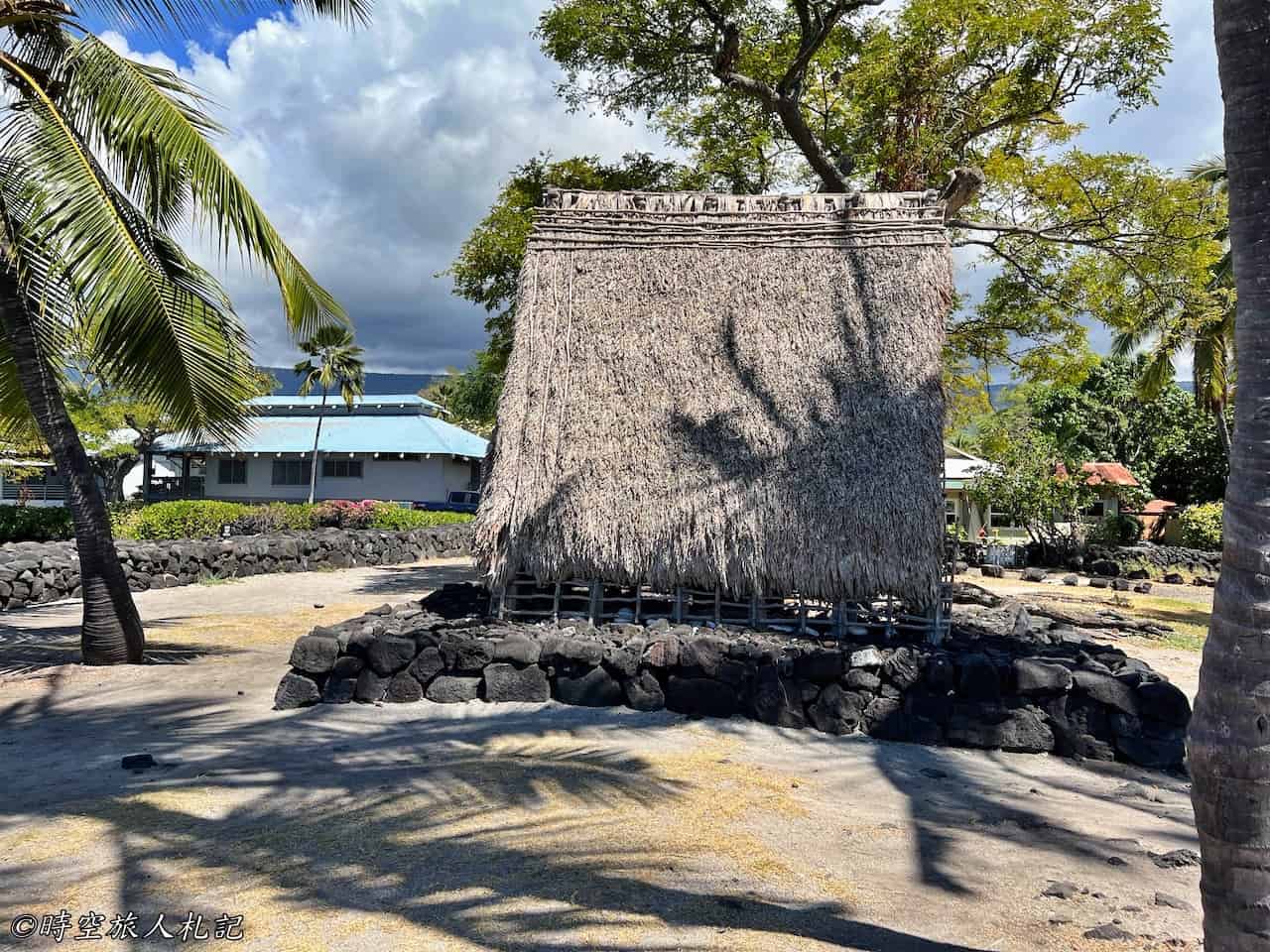
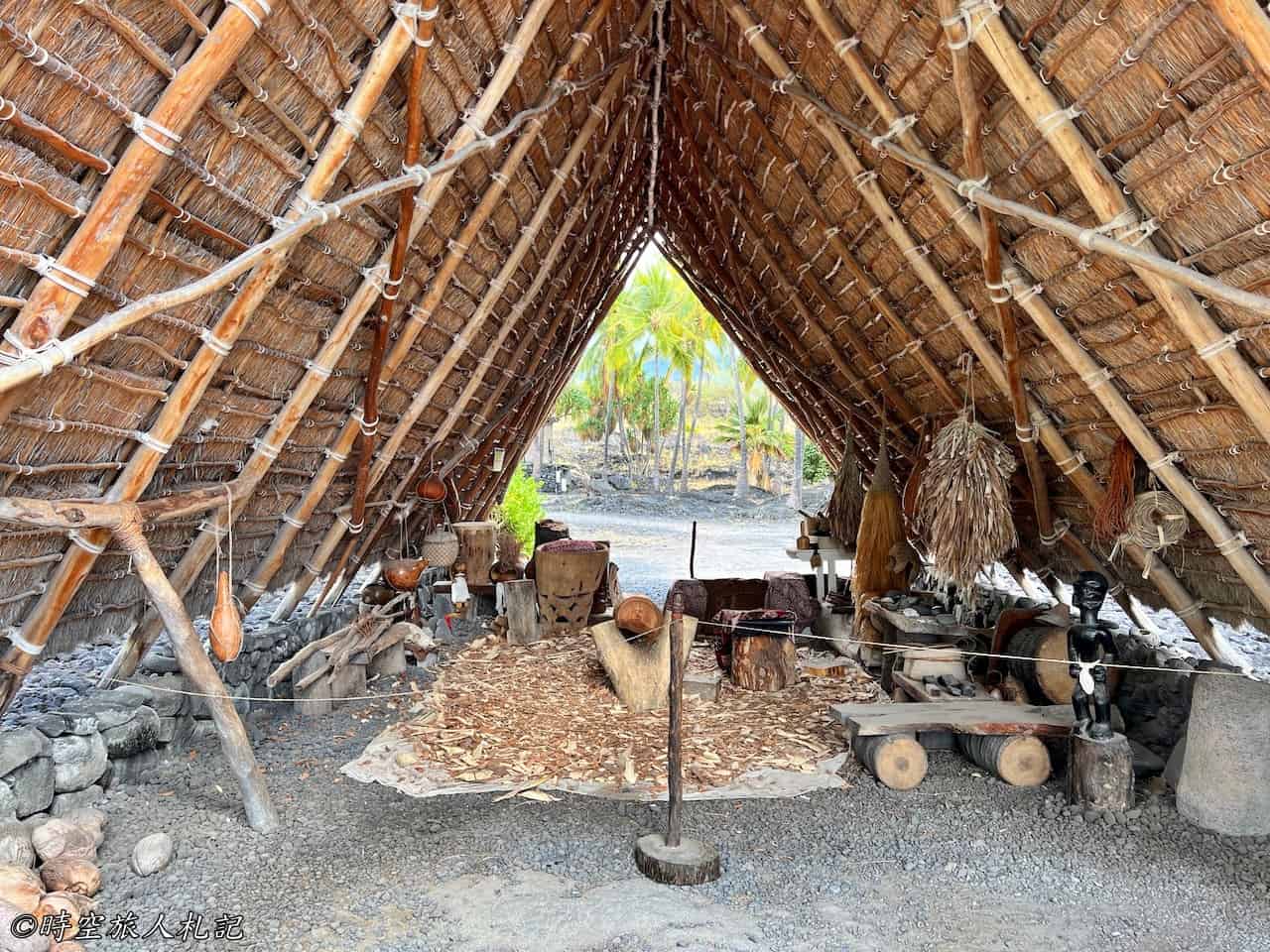
Hale o Keawe
At the junction of Royal grounds and Pu'uhonua, on the northern edge of the Great wall, is a fenced house called Hale o Keawe, which is in fact a shrine of great importance, where 23 ancient sheikhs are buried, including the great-grandfather of the great King Kamehameha. What we see here is actually a replica of the original structure, which archaeologists believe was built around the 16th century but destroyed in 1829. In Hawaiian culture, it is believed that the Pu'uhonua within the walls were protected by the sacred power of Hale o Keawe.
![Hawaii Island] Kona Scenic Spot Itinerary 26 Kona, big island kona 25](https://blog.travelhackfun.com/wp-content/uploads/2022/05/batch_2022-03-04-14-26-28.jpg)
![Hawaii Island] Kona Scenic Spot Itinerary 27 Kona, big island kona 26](https://blog.travelhackfun.com/wp-content/uploads/2022/05/batch_2022-03-04-14-27-26.jpg)
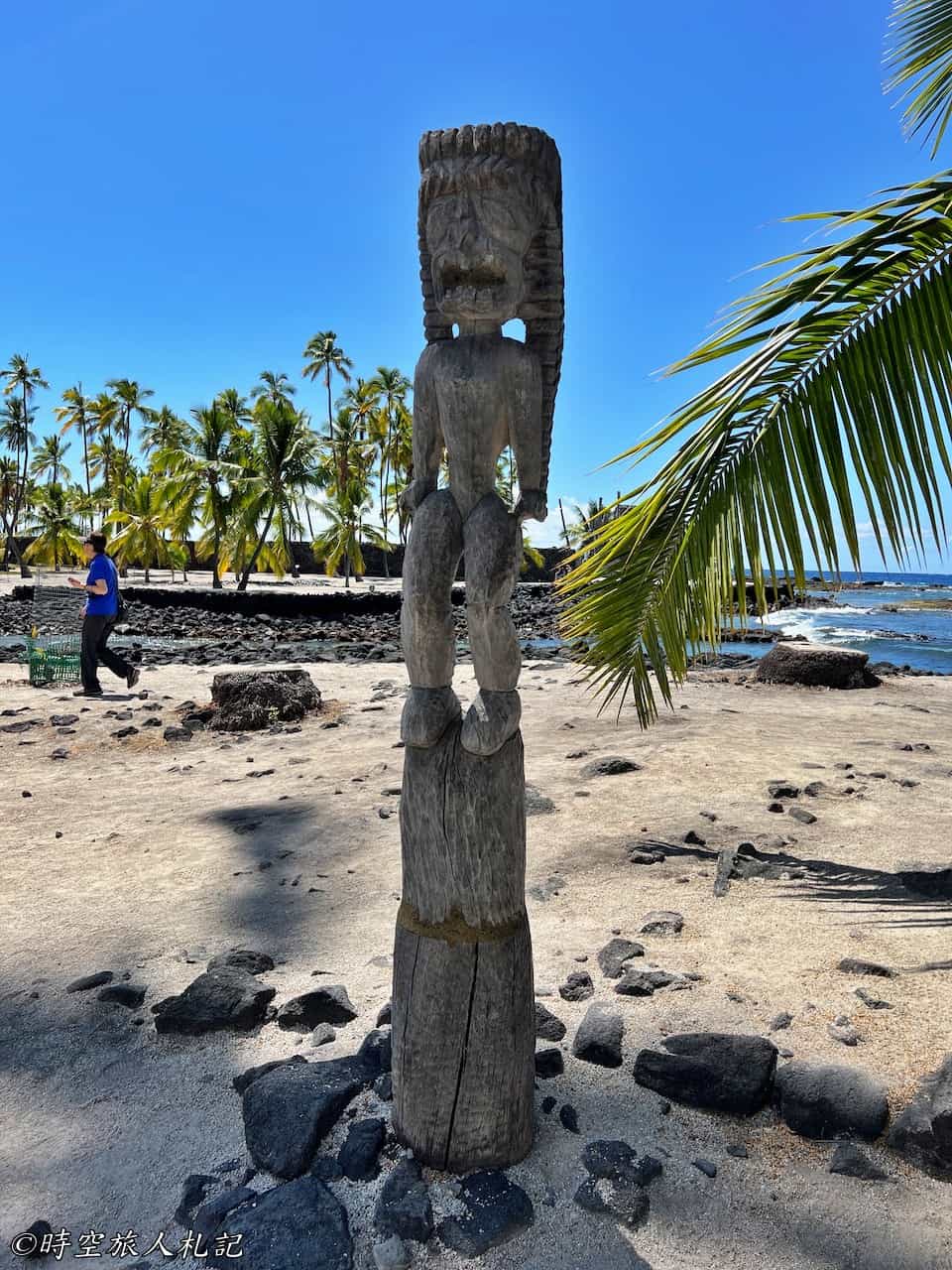
![Hawaii Island] Kona Scenic Spot Itinerary 29 Kona, big island kona 28](https://blog.travelhackfun.com/wp-content/uploads/2022/05/batch_2022-03-04-14-27-44.jpg)
Pu'uhonua
Ancient Hawaiian social order was based on laws called Kapu, which regulated such things as fishing and agriculture and the use of natural resources. Those who violated these laws were usually subject to the harsh penalty of death. The only way for offenders to escape the death penalty was to flee to Pu'uhonua, a concept similar to that of refugee shelters, which housed not only offenders but also, later, refugees who had left their homes during the war. The roots of this concept are part of Polynesian culture, and there were originally many Pu'uhonua on Hawaii Island, but this is the only well-preserved one.
Getting to Pu'uhonua is not easy, you have to run away from your pursuers, cross the Great Wall, swim across the ocean, and run barefoot all the way across the cold lava. But if you make it through all the difficulties, you will be safe from all interference once you enter the Pu'uhonua area. After a period of time in which the offender is purified by the clergy, he or she can return to ordinary society.
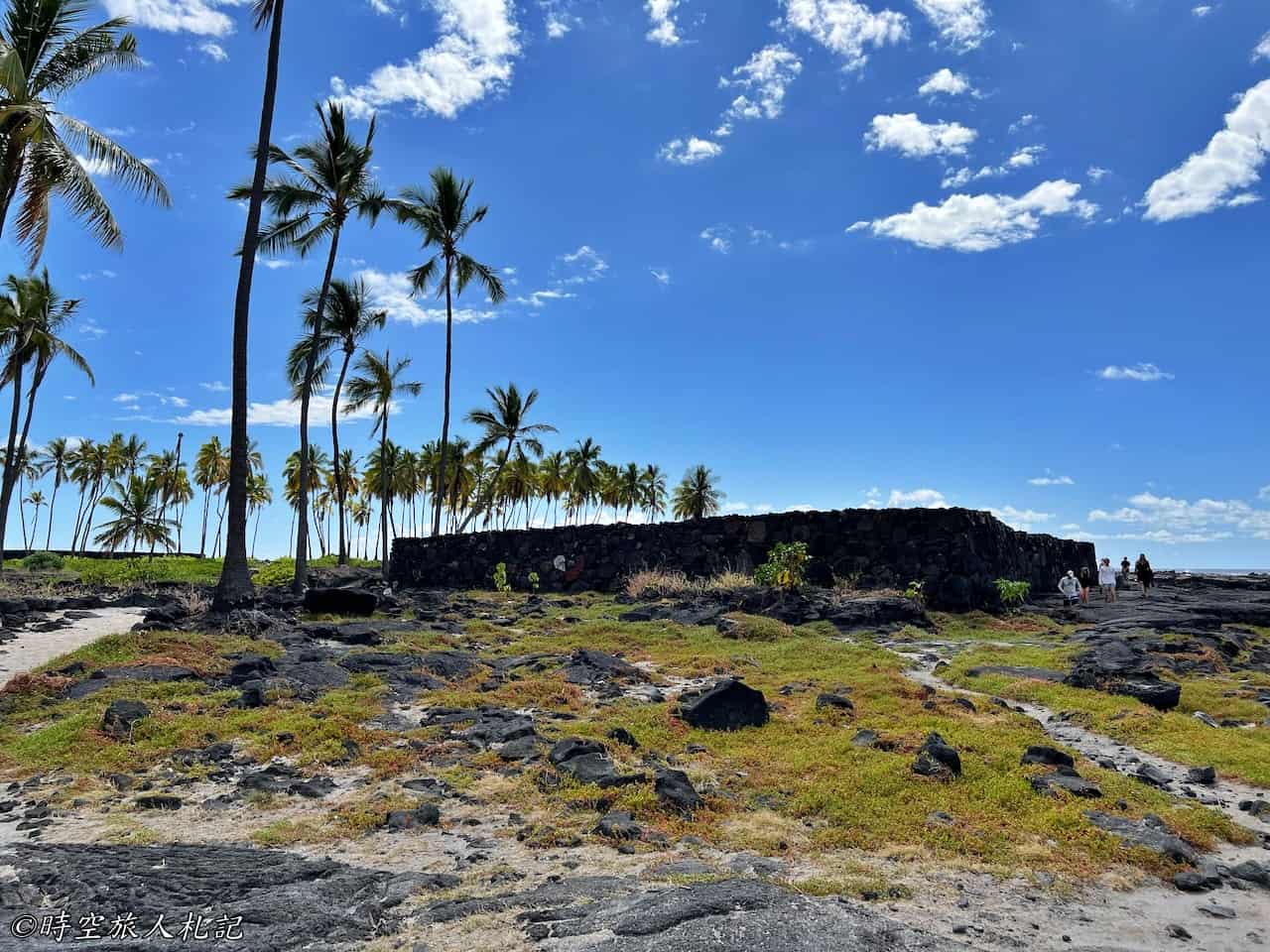
![Hawaii Island] Kona Scenic Spot Itinerary 31 Kona, big island kona 30](https://blog.travelhackfun.com/wp-content/uploads/2022/05/batch_2022-03-04-14-31-52.jpg)
Kona | Beaches and Activities
The area around Kona is indeed filled with beautiful beaches, and almost anywhere you drive along the coast, you can find lovely beach parks, many of which are excellent snorkeling spots. This includes the various historical parks mentioned earlier; we actually snorkelled at the beaches next to them. Because it's impossible to detail every location, here we only record some other places we visited and particularly liked. To protect the marine ecosystem, it's important to be mindful of the sunscreen you use while snorkeling in Hawaii. There are regulations regarding sunscreen, and we made sure to purchase the correct type of sunscreen (like this one) before our trip.
Kahalu'u beach park
This is a rather famous snorkeling spot, so it tends to get very crowded; it's best to arrive early. Besides the abundance of fish, a key feature is the presence of volunteers managing the area, with complete facilities available, including showers for after snorkeling. The volunteers, in addition to promoting ecological knowledge, also enthusiastically offer anti-fog spray to us, which was incredibly thoughtful.
![Hawaii Island] Kona Scenic Spot Itinerary 32 Kona, big island kona 31](https://blog.travelhackfun.com/wp-content/uploads/2022/05/batch_2022-03-04-10-33-19.jpg)
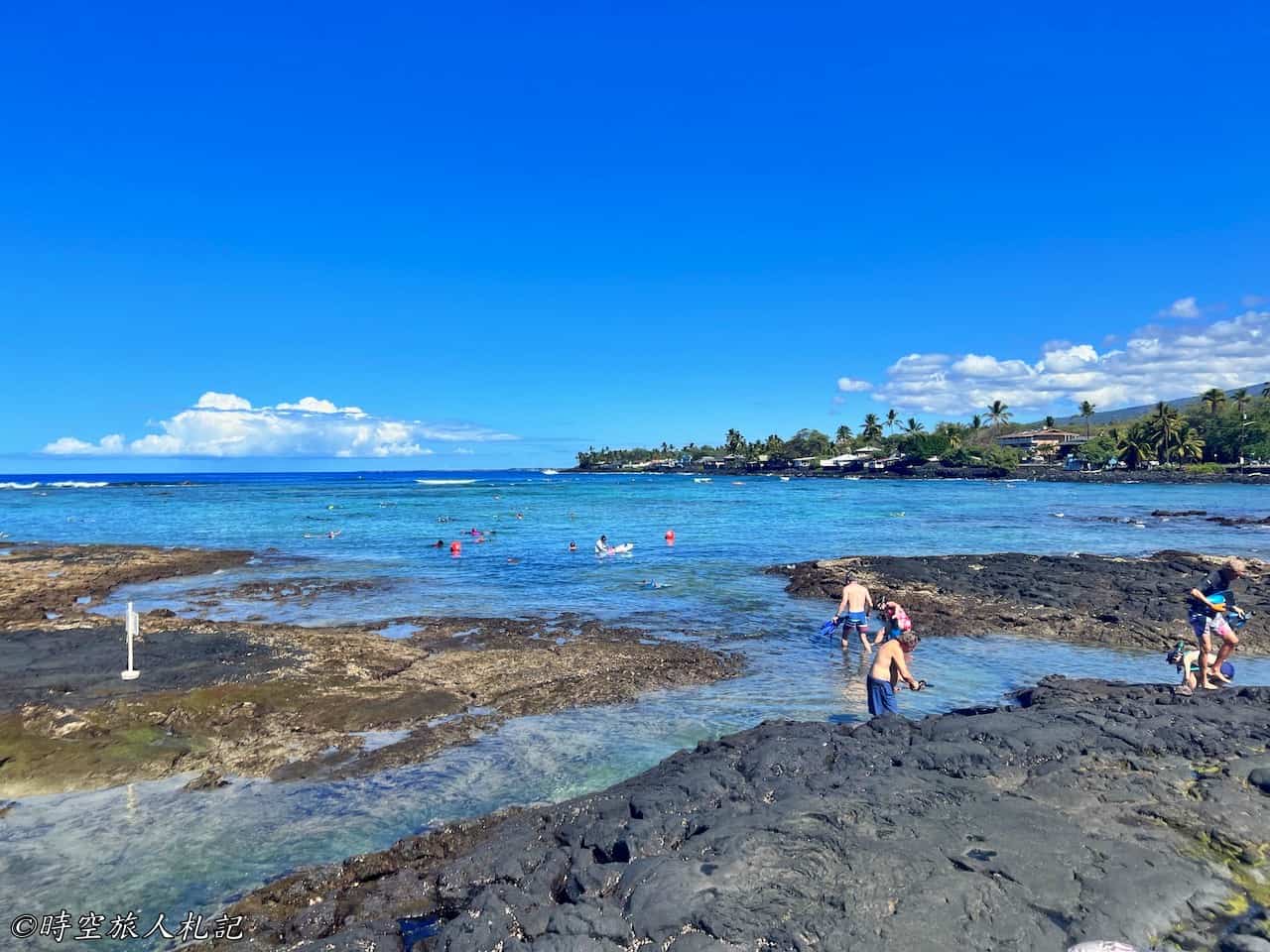
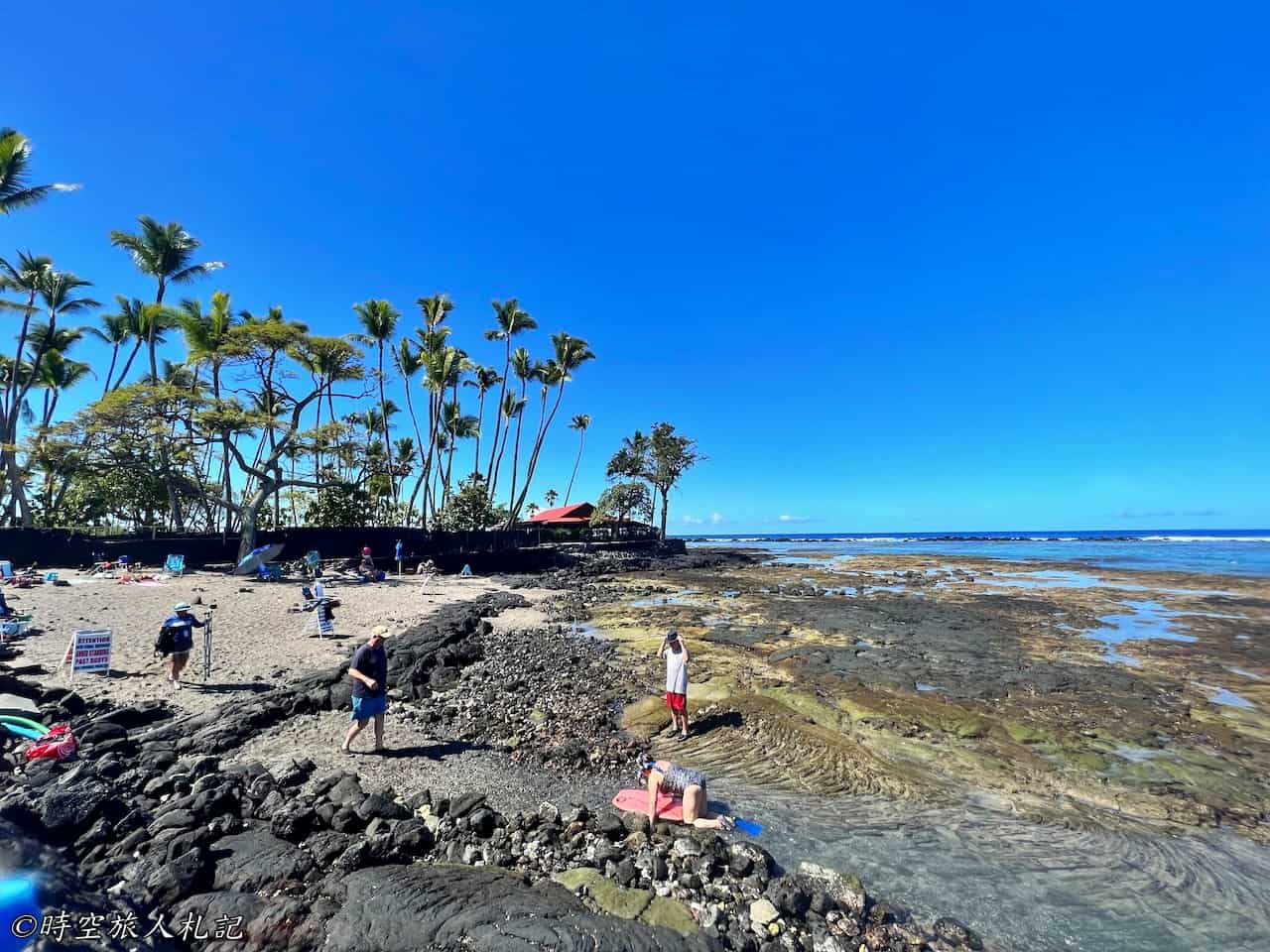
Magic sands beach park
We actually didn't come to this Beach Park to swim or snorkel; what did we come for? A picnic. Coming here was purely by chance, just looking for a place to eat. But the seawater here is really beautiful, with a color that's different from other beaches.

Kealakekua Bay
For snorkeling at Kealakekua Bay, we participated in the Captain Zodiac snorkeling trip. This trip involves riding in a Navy SEALs-style rigid inflatable boat, which is quite thrilling. On the way there, you can see the historical sites of Kona Old Town from the sea.
![Hawaii Island] Kona Scenic Spot Itinerary 36 Kona, big island kona 35](https://blog.travelhackfun.com/wp-content/uploads/2022/05/batch_2022-03-05-08-06-42.jpg)
![Hawaii Island] Kona Scenic Spot Itinerary 37 Kona, big island kona 36](https://blog.travelhackfun.com/wp-content/uploads/2022/05/batch_2022-03-05-08-08-54.jpg)
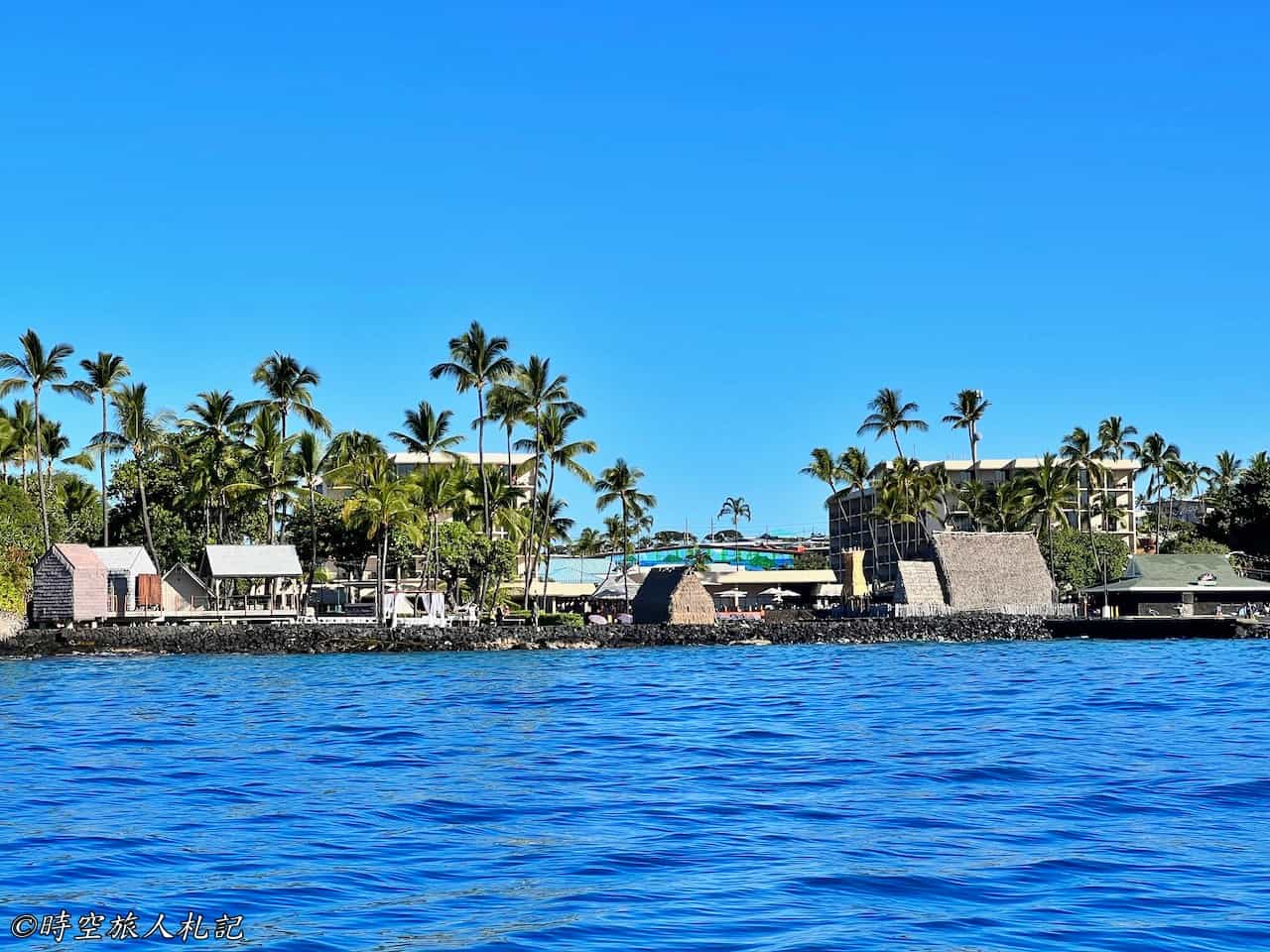
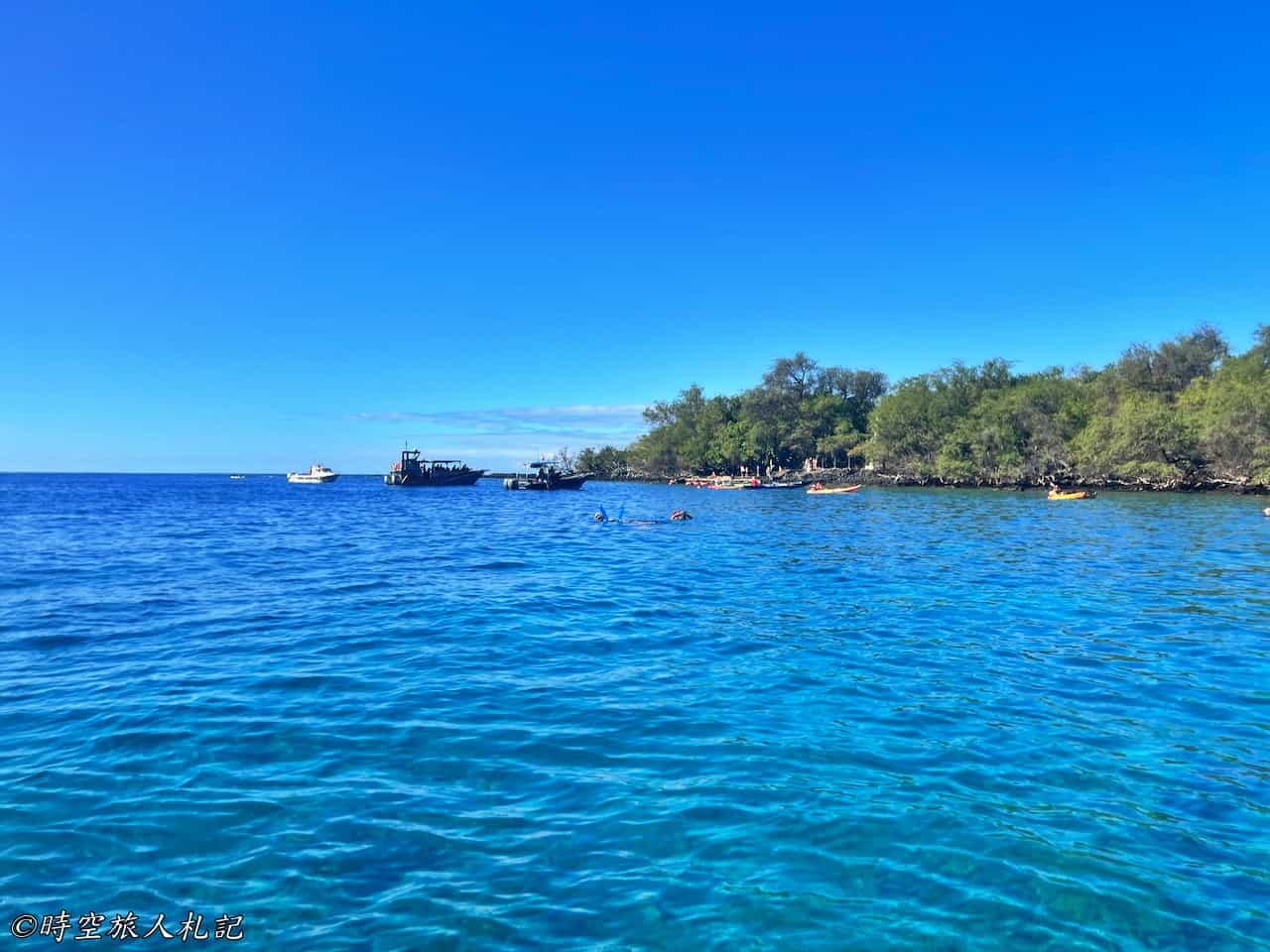
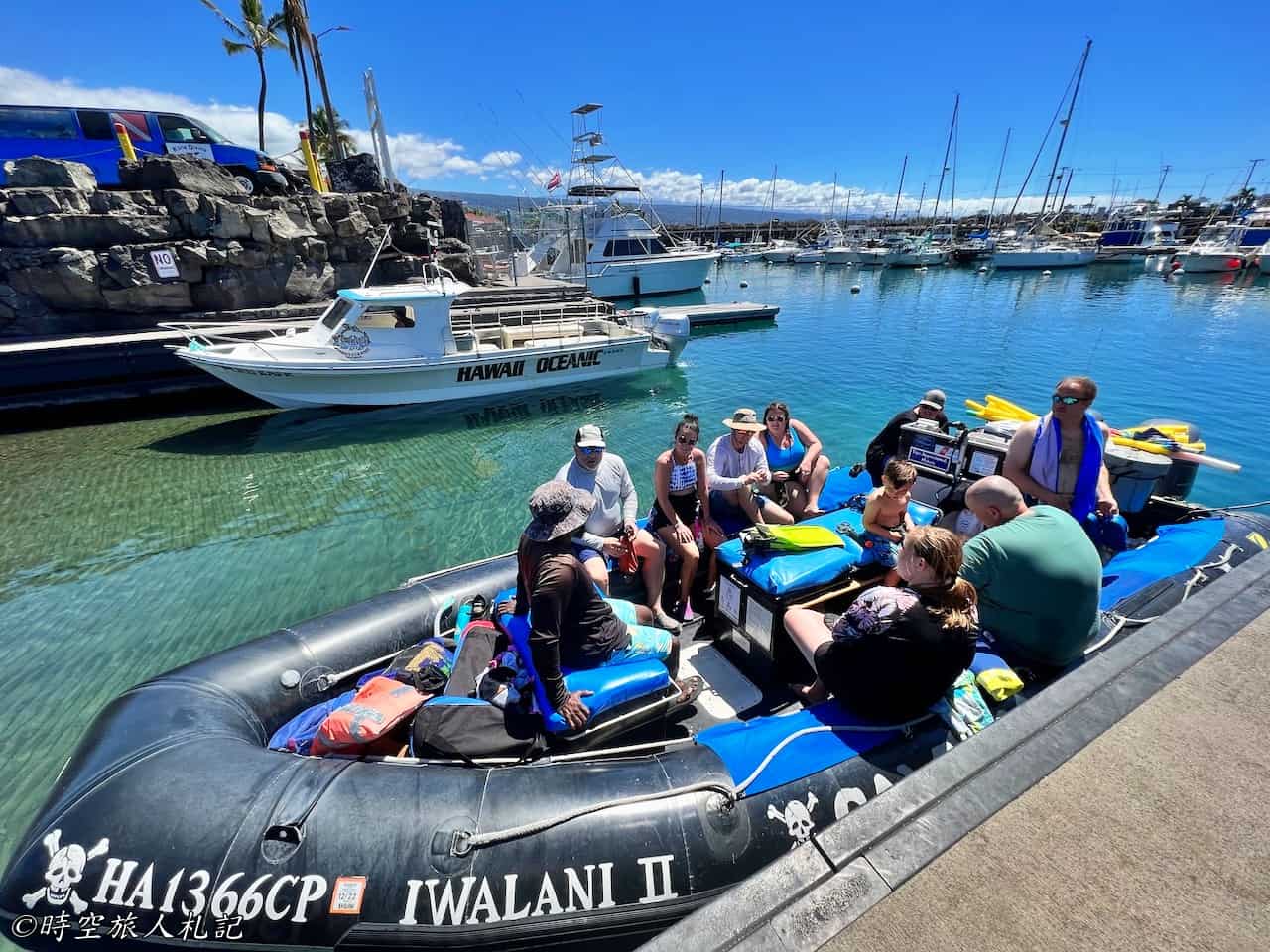
The boat journey takes about an hour one way, and if you're lucky, you might be able to see whales just like we did.
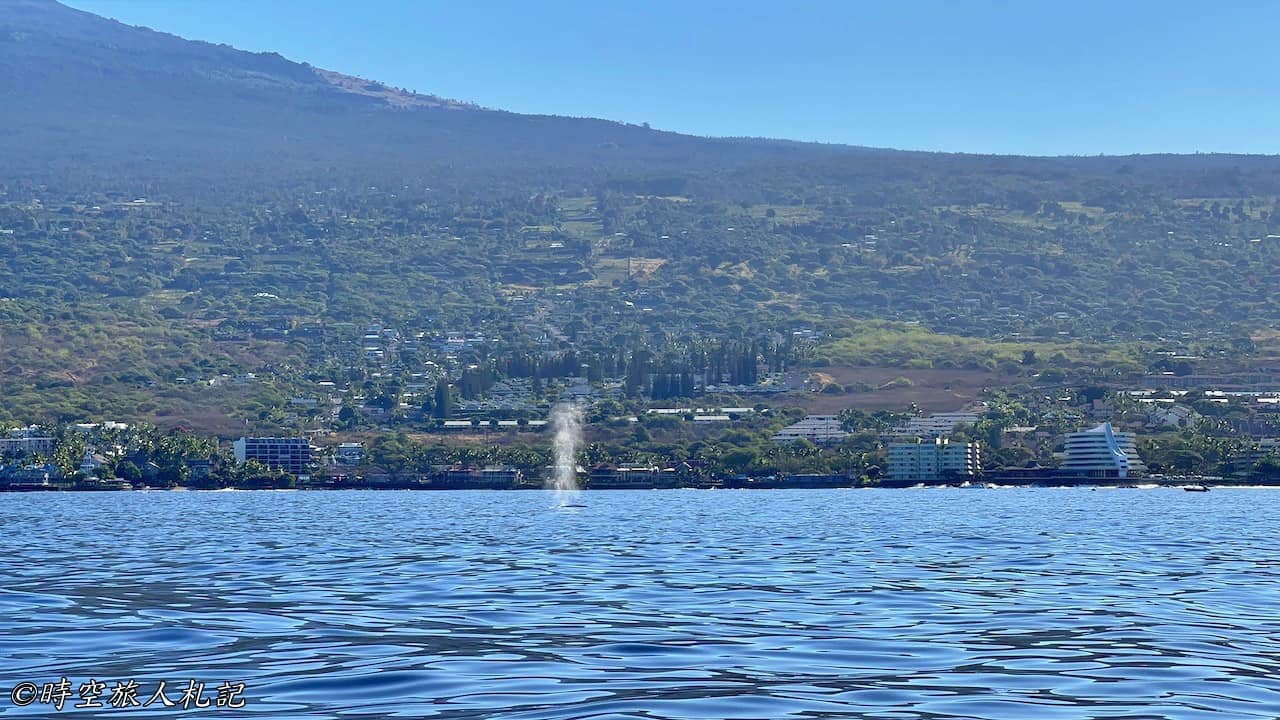
The boat stops near the Captain Cook Monument to let us off for snorkeling, with about an hour of snorkeling time. The variety and quantity of fish we saw here were the most impressive of the entire trip, after snorkeling around seven or eight times, making it well worth the price.
The Captain Cook Monument is actually located within the Kealakekua Bay State Historical Park, so it's also possible to hike in about 3.8 miles, although the hiking trail is more challenging and much harder than taking a boat. Captain Cook was the first captain to arrive in Hawaii and is considered the discoverer of Hawaii.
![Hawaii Island] Kona Scenic Spot Itinerary 42 Kona, big island kona 41](https://blog.travelhackfun.com/wp-content/uploads/2022/05/batch_2022-03-05-10-06-55.jpg)
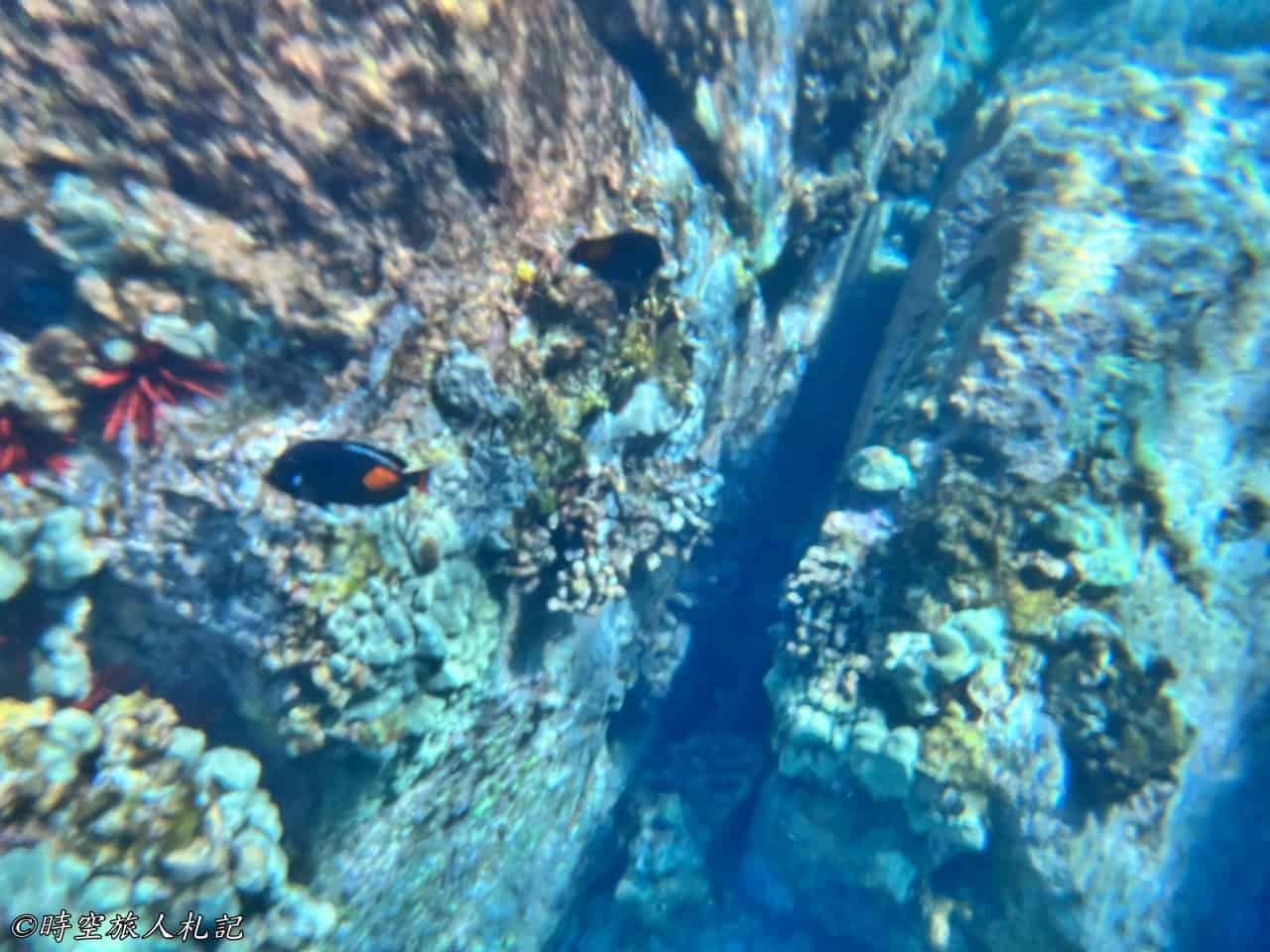

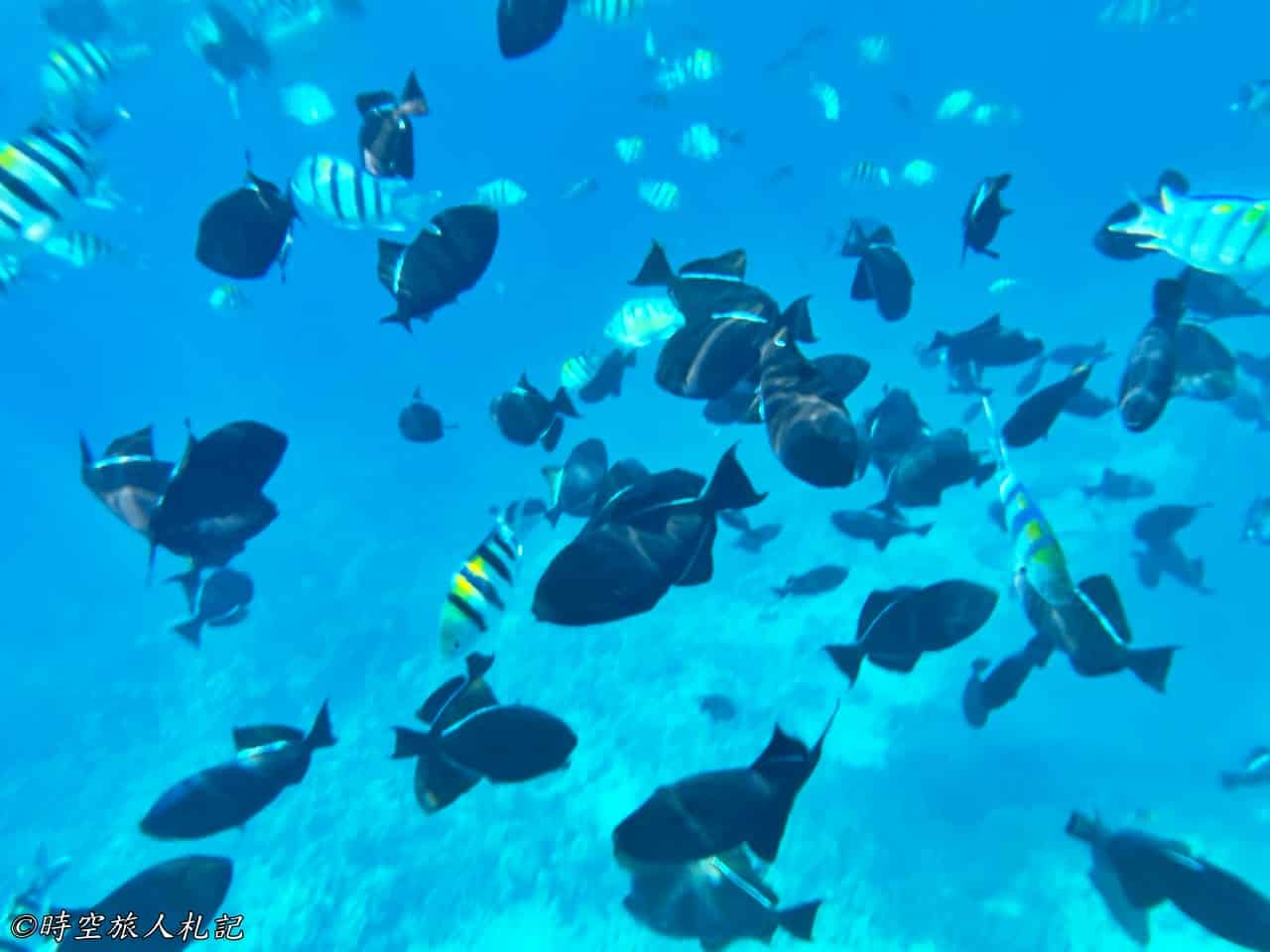
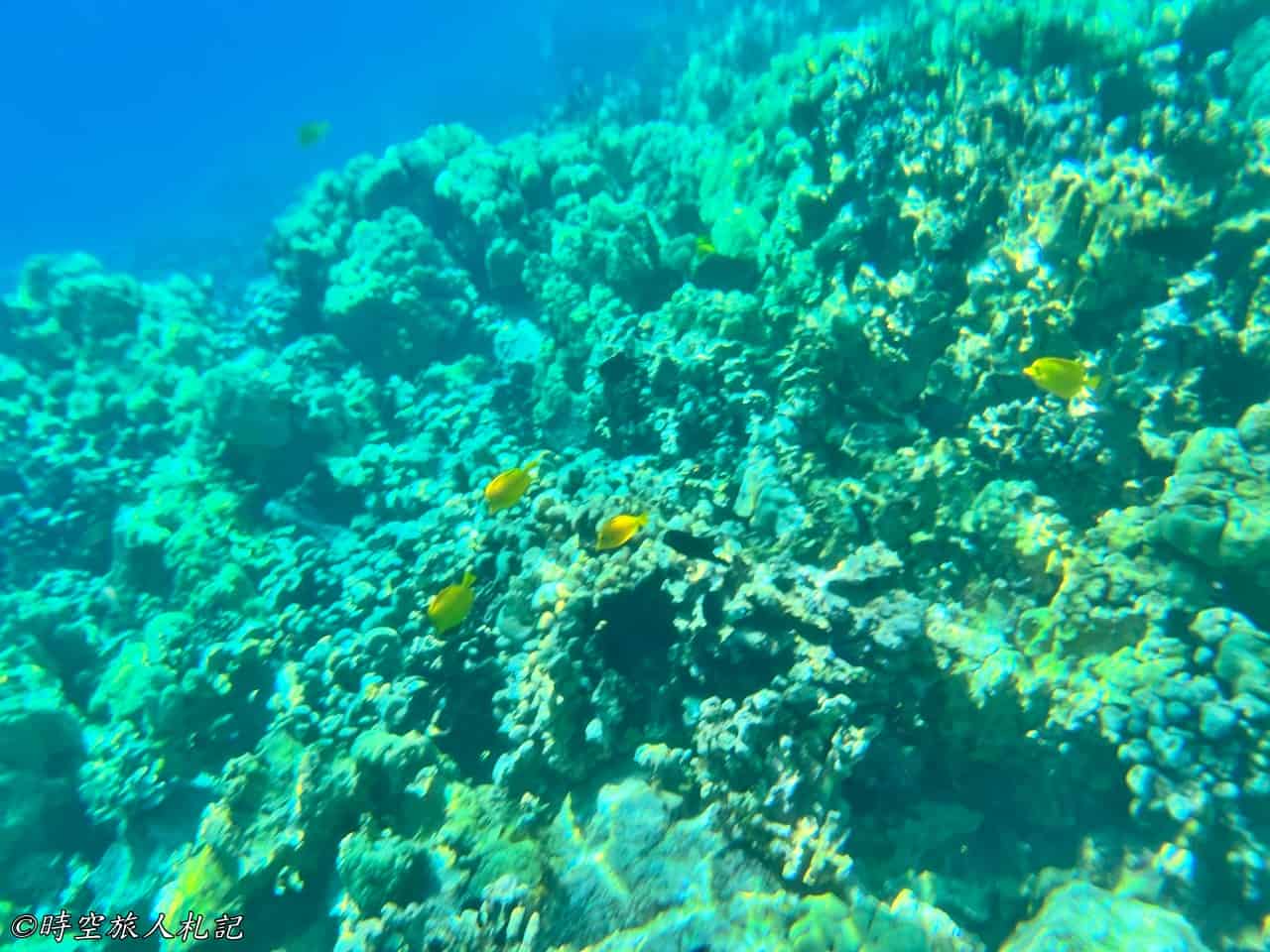
![Hawaii Island] Kona Scenic Spot Itinerary 47 Kona, big island kona 46](https://blog.travelhackfun.com/wp-content/uploads/2022/05/batch_2022-03-05-10-09-12.jpg)
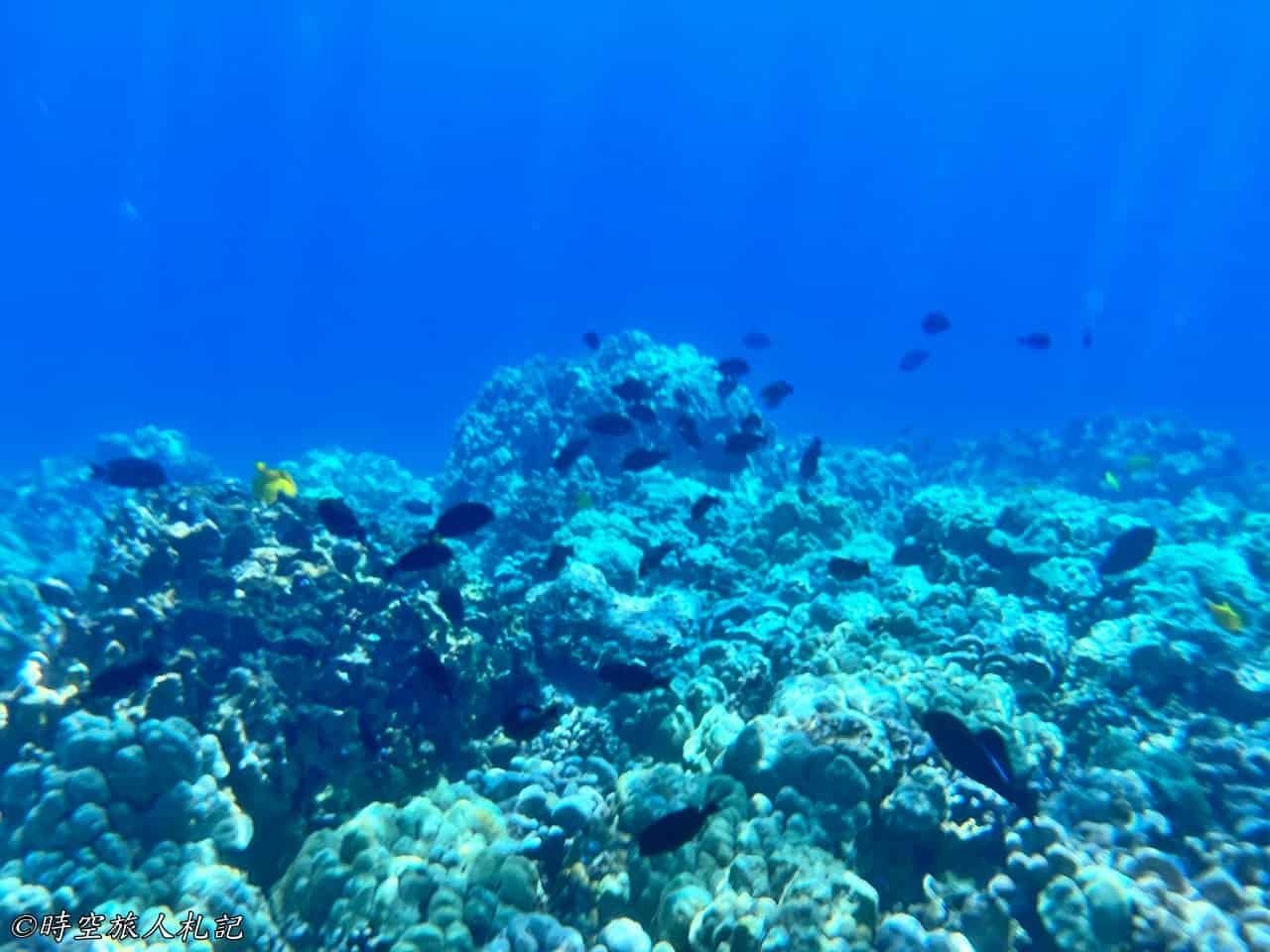
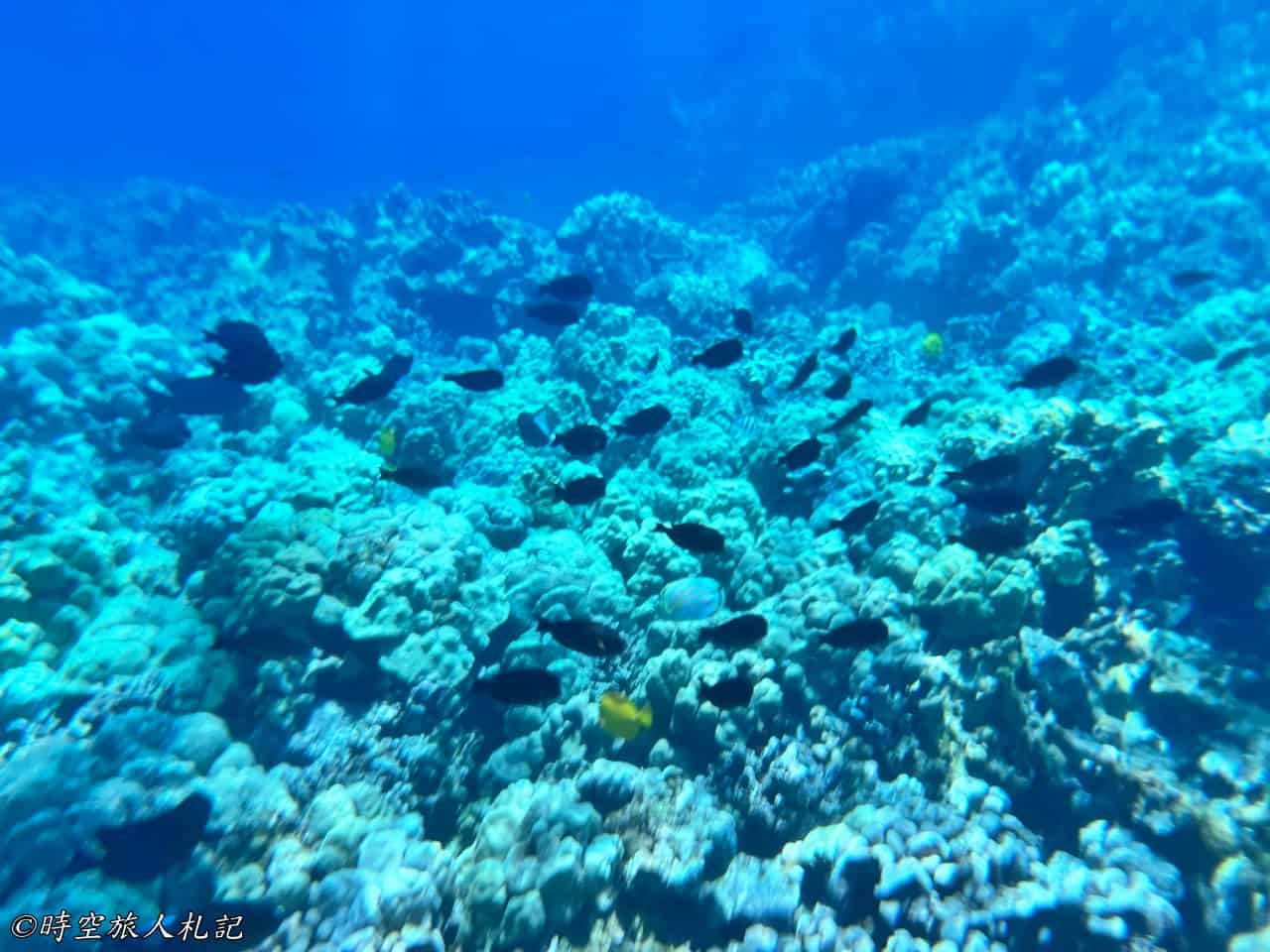
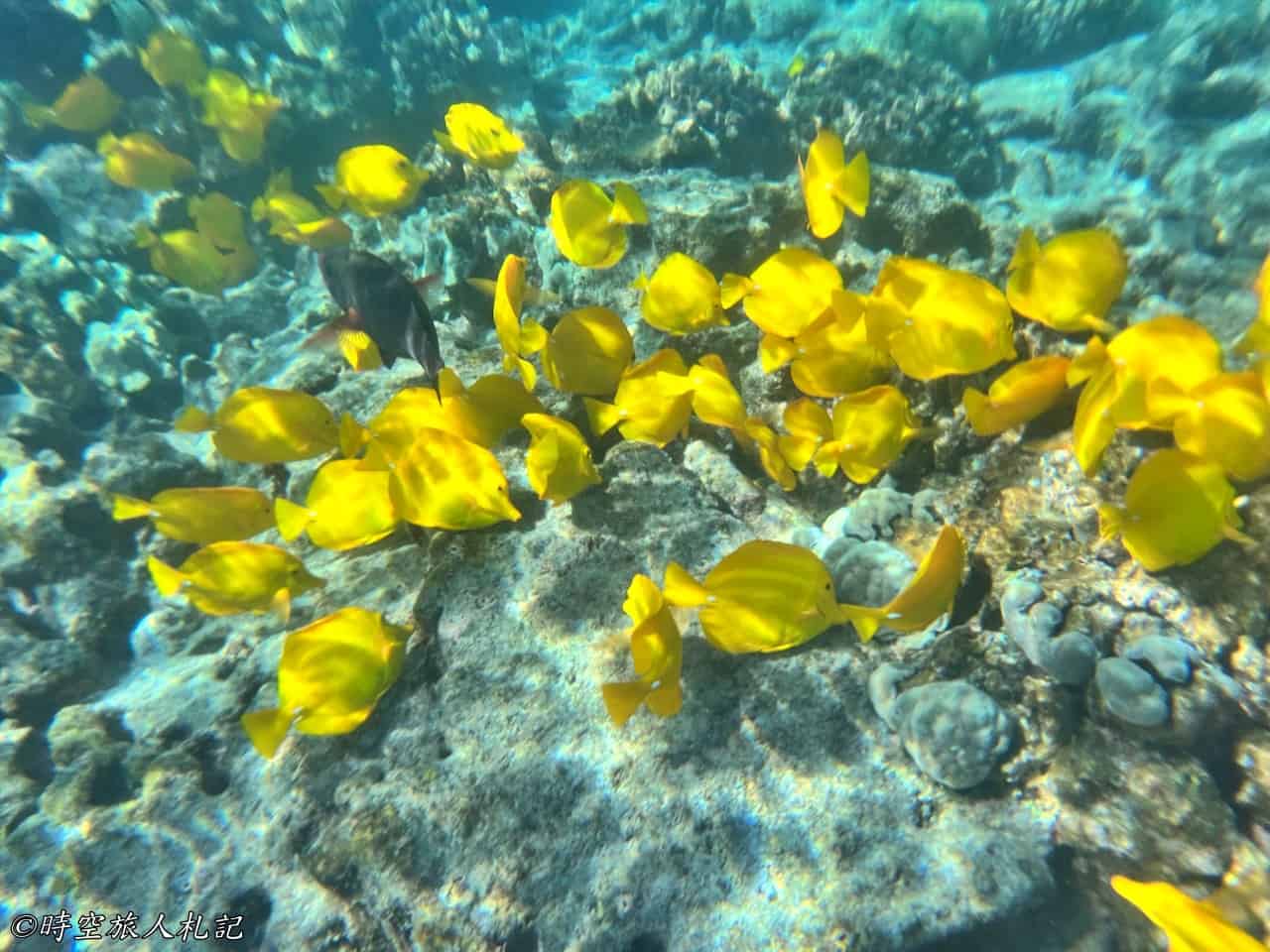
After snorkeling, we went back to the boat and the owner prepared fresh pineapple, snacks and water for us to enjoy before the return trip. On the way back, we were also taken to see Ka'awaloa Cove, which is a big lava tube, the hole we are looking at now used to be volcanic lava.
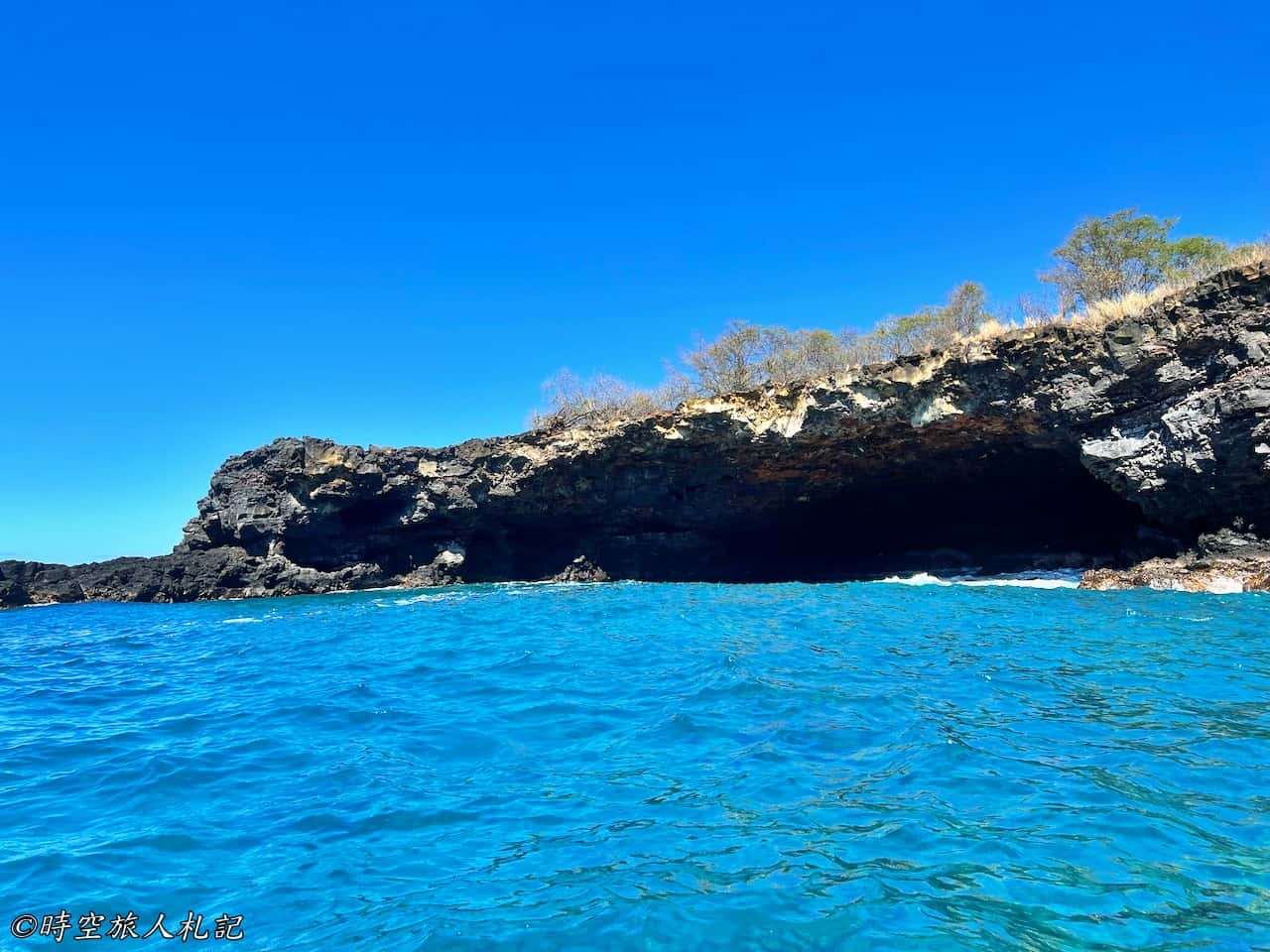
Devil Fish Night Dive Itinerary
To see the devil fish (manta ray) is part of the night diving itinerary. The itinerary is quite simple. After gathering, you'll be given diving suits. Once you change into them, you'll board the boat. After reaching the designated spot, you'll be divided into groups and go underwater with a float board to observe the fish. The boat company will provide illumination to attract food for the manta rays. Then, large groups of manta rays will appear immediately. Up close, they are really huge, circling incessantly underwater, and sometimes accidentally bumping into us.
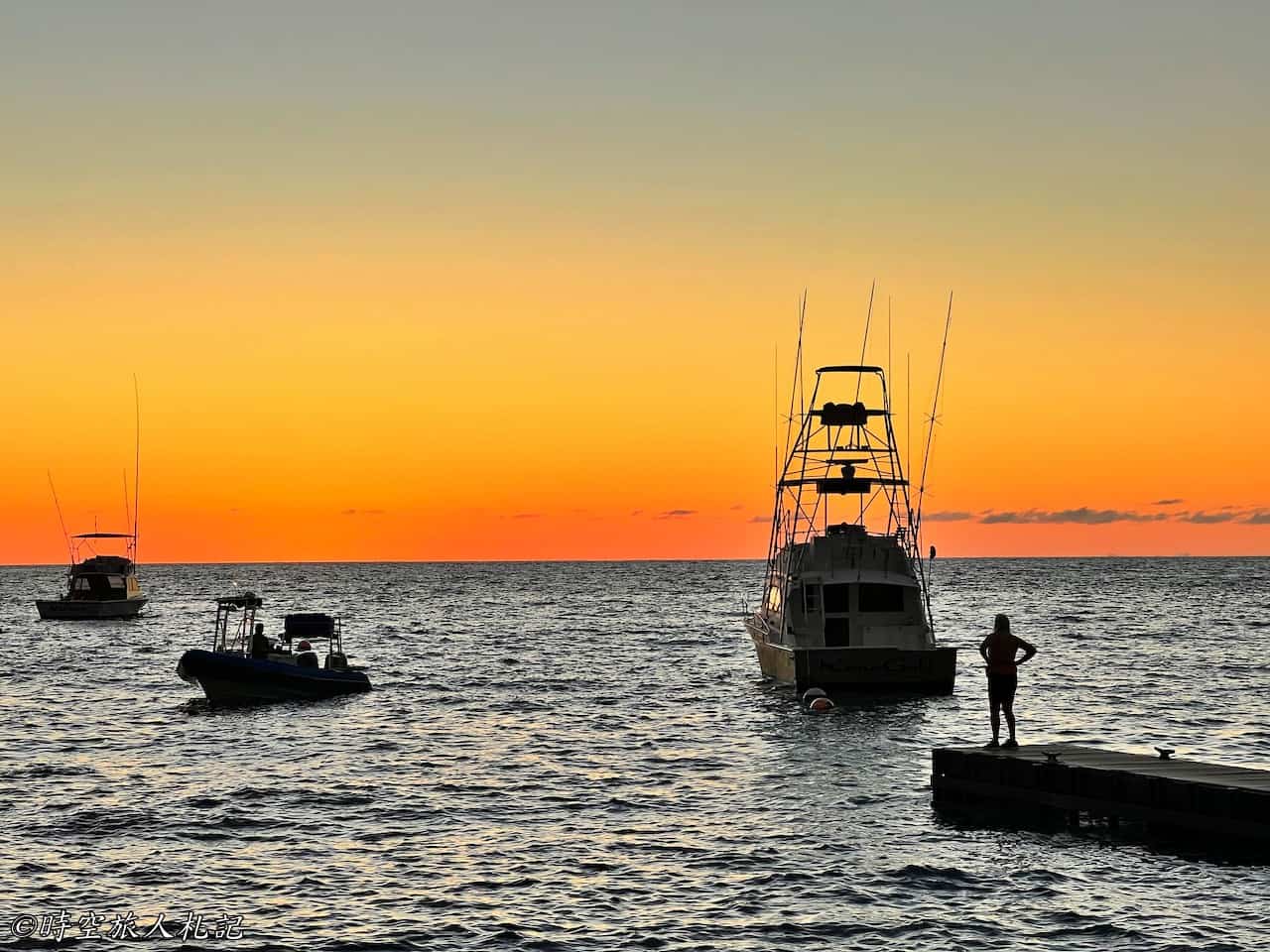
![Hawaii Island] Kona Scenic Spot Itinerary 53 Kona, big island kona 52](https://blog.travelhackfun.com/wp-content/uploads/2022/05/batch_2022-03-04-18-53-56.jpg)


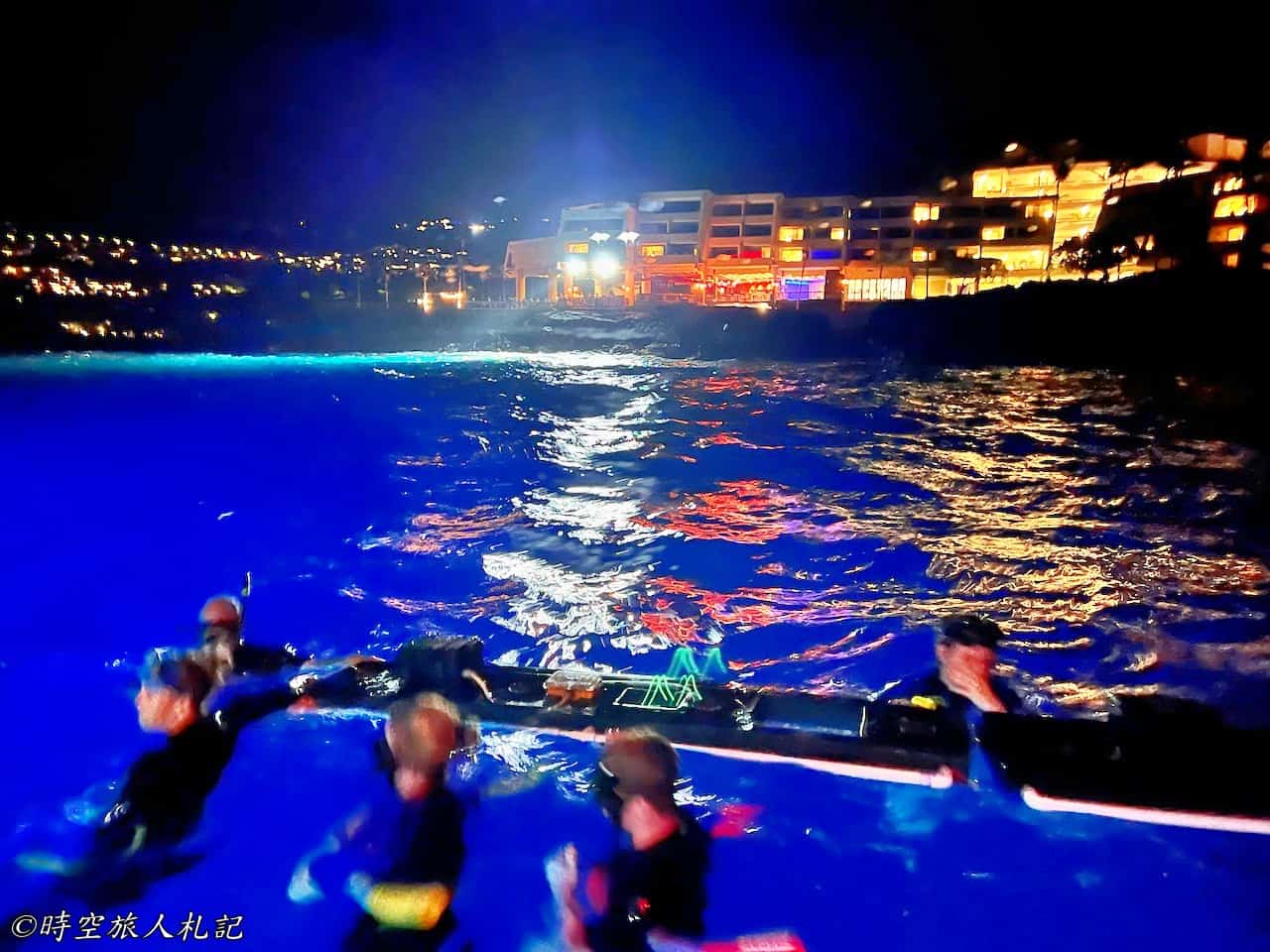
Kona Manta Ray Night Dive Itinerary
Further reading
- From Volcanoes to Cuisine: 8 Days on Hawaii's Big Island
- Big Island - Kona Travel Guide
- Big Island - Kohala Coast Travel Guide | Waikoloa Village | Puukohola Heiau | Hapuna Beach | Lapakahi State Park
- What to Do in Hilo? A Two-Day Itinerary for Exploring the East Side of the Big Island
- Hawaii Volcanoes National Park 2 Days Travel Guide
- Big Island Hotel Recommendations | Budget-Friendly Accommodation Review
- 【Hawaii Big Island】Food Adventures on the Big Island | What to Eat Around the Island? | 18 Restaurants and Snack Bars on the Big Island
Thank you for visiting our website.
All the content on this site is original and shared with the purpose of providing valuable information. We sustain the operation of this site through a small amount of advertising and sponsored links. If you click on links to third-party merchants on our site and make purchases, we may receive a portion of the sales as a commission. If you click on links to third-party merchants on our site and make purchases, we may receive a portion of the sales as a commission.
Find more posts on a map Here.
My recommended resources for hotel bookings.
Recommended travel credit card for US-based travelers
Travel with just a backpack!
Buy me a coffee and support my contents!
If you are interested in quoting this article or using any part of its content and images on your website or publication, please contact us via email to request permission.
